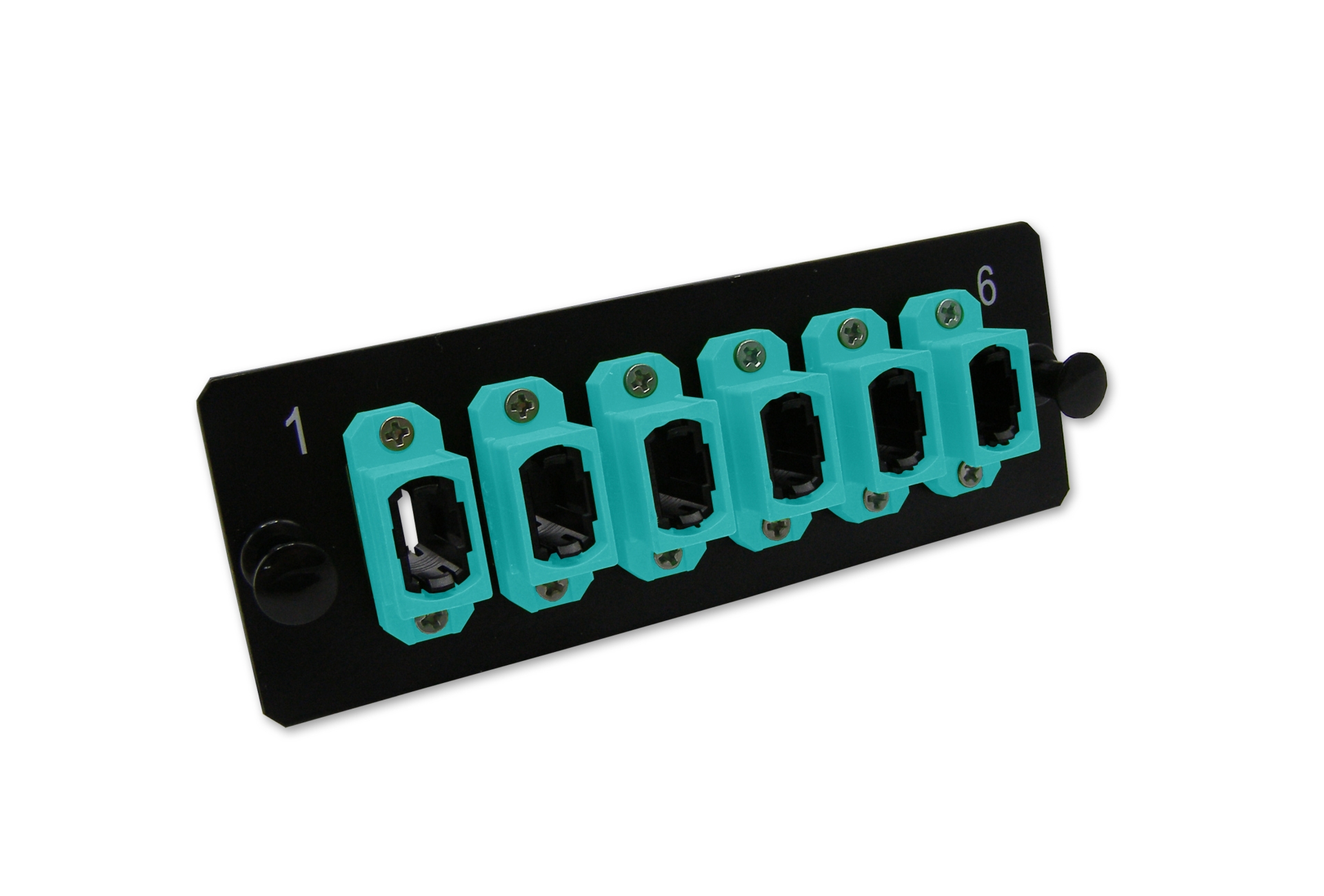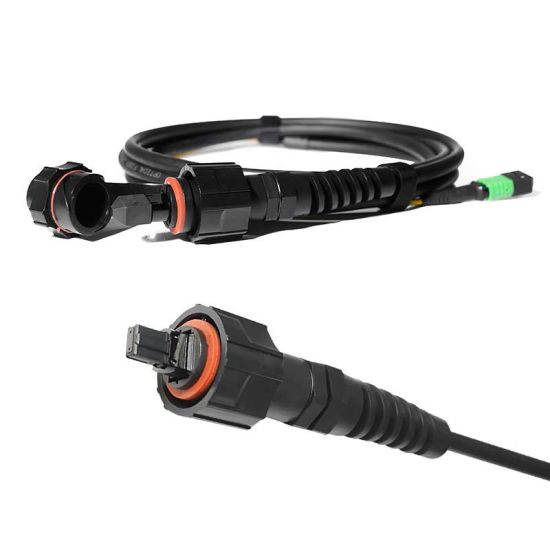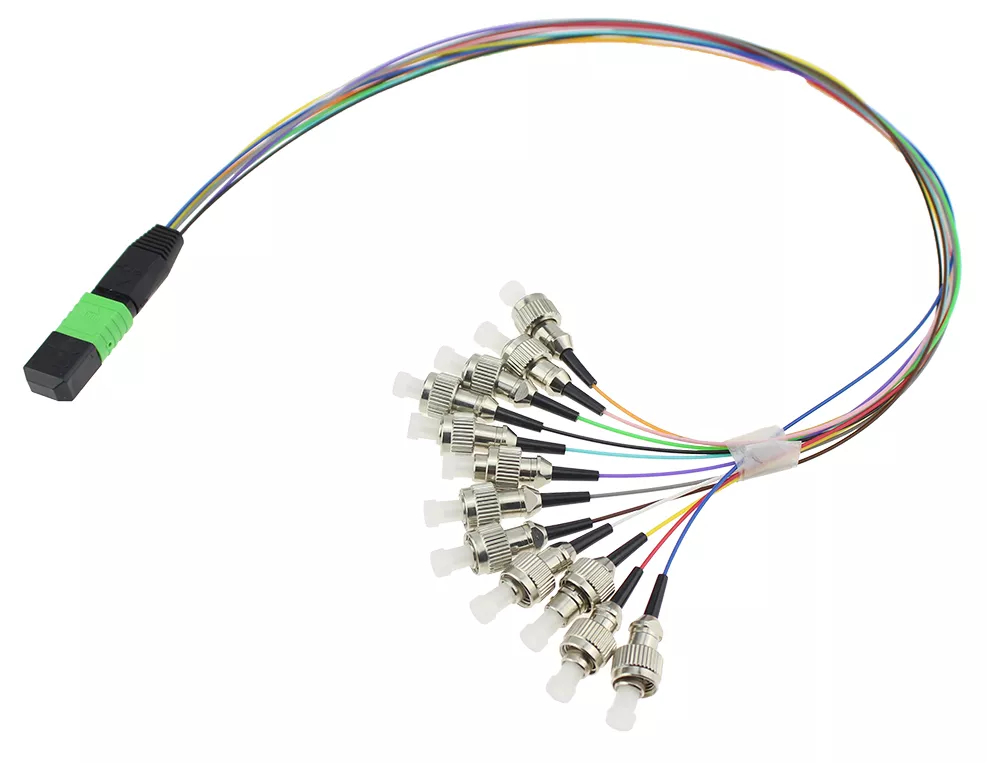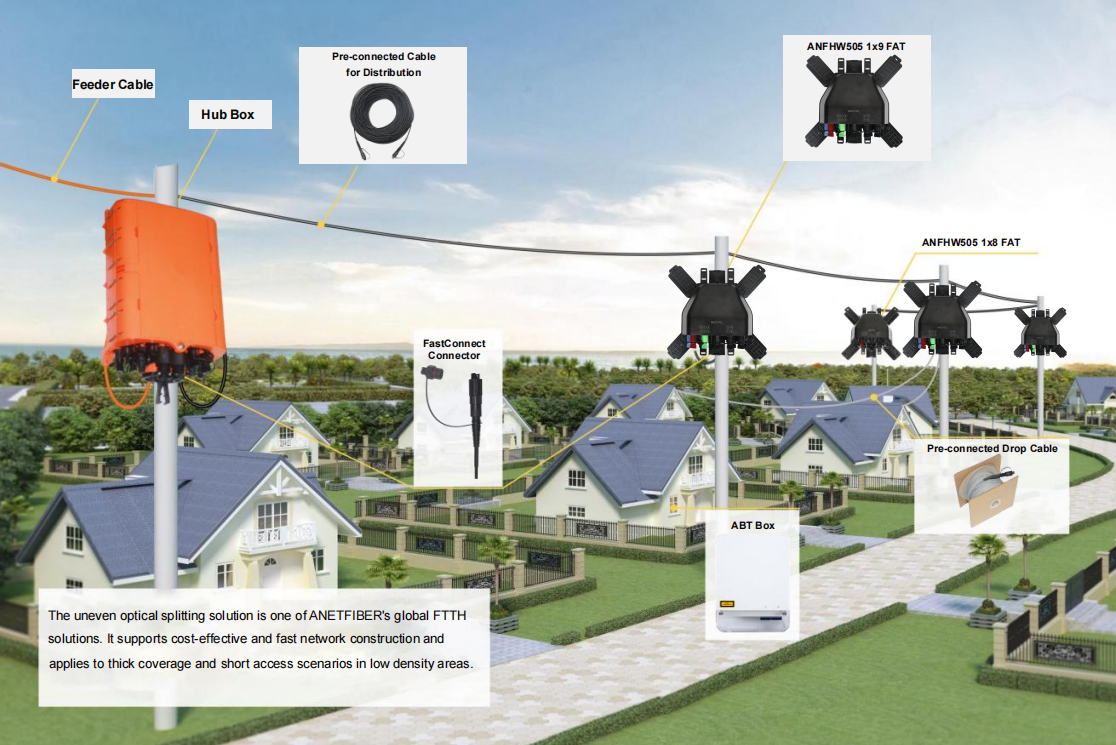MPO Connectors: Enhancing Data Center Performance

MPO connectors are pivotal in advancing data center performance through cutting-edge fibertechnology. These connectors enable high-density fiber optic connections, providing an efficient fibersolution for organizing and scaling fiber networks. As the digital landscape rapidly evolves, the demand for robust data center performance has increased significantly. MPO connectors offer an effective patchcable solution by minimizing the cable footprint and achieving high-density connections in limited space. This mpotype technology supports high-speed data transfer and simplifies installation processes. MPO cassettes and rackmount options further optimize space utilization, making MPO modules an essential component in modern datacenter environments. Additionally, the integration of MPO connectors into ODF systems enhances connectivity and efficiency, solidifying their role in contemporary data center infrastructure.
Understanding MPO Connectors
What are MPO Connectors?
Definition and Basic Structure
MPO connectors, short for Multi-fiber Push On connectors, represent a significant advancement in fibertechnology. These connectors combine multiple optical fibers into a single connector, offering an efficient fibersolution for high-density environments. The basic structure includes a rectangular ferrule that holds the fibers in precise alignment. This design ensures consistent and reliable connections, which are crucial for modern datacenter operations.
Historical Development and Evolution
The development of MPO connectors traces back to the 1980s when Nippon Telephone and Telegraph (NTT) introduced them based on mechanical transfer ferrule technology. Over time, improvements led to the creation of the MTP connector, an enhanced version of the original MPO. The MTP connector was the first to be factory-engineered to specific cable lengths, simplifying installation and future changes in optical infrastructure. This evolution has made MPO connectors a preferred choice in large-scale datacenter environments.
Key Features of MPO Connectors
High-Density Connectivity
MPO connectors excel in providing high-density connectivity, a critical requirement for modern datacenters. The ability to accommodate more than 72 fibers in a single connector reduces the need for extensive patchcable installations. This feature minimizes cable clutter and optimizes space utilization, making MPO connectors ideal for high-bandwidth applications.
Scalability and Flexibility
Scalability and flexibility are inherent features of MPO connectors. The modular design allows for easy integration with existing systems, such as ODF and rackmount configurations. This adaptability supports seamless upgrades and expansions, ensuring that datacenters can meet future demands without significant overhauls.
Types of MPO Connectors
Single-Mode vs. Multi-Mode
MPO connectors come in two primary types: single-mode and multi-mode. Single-mode connectors are suitable for long-distance transmission due to their lower attenuation. Multi-mode connectors support shorter distances but offer higher bandwidth because of multiple light paths. The choice between these types depends on the specific requirements of the datacenter.
MPO connectors offer variations in fiber count, typically ranging from 12 to 72 fibers. Preferences are shifting towards connectors featuring 16 fibers per row, especially with the rise of 400G Ethernet systems. These variations provide flexibility in designing network infrastructure, allowing datacenters to tailor their fibertechnology solutions to specific needs.
MPO connectors offer variations in fiber count, typically ranging from 12 to 72 fibers. Preferences are shifting towards connectors featuring 16 fibers per row, especially with the rise of 400G Ethernet systems. These variations provide flexibility in designing network infrastructure, allowing datacenters to tailor their fibertechnology solutions to specific needs.

Benefits of MPO Connectors in Data Centers
Enhanced Performance
Increased Data Transmission Speed
MPO connectors significantly boost data transmission speed. The high-density fibertechnology allows for rapid data transfer across multiple channels. MPO connectors significantly boost data transmission speed. The efficient fibersolution reduces latency and enhances overall network performance.
Improved Network Reliability
Network reliability improves with MPO connectors. The precise alignment of fibers ensures consistent connections. MPO connectors minimize signal loss and maintain high-quality data transmission. The robust design withstands environmental factors, enhancing the durability of the network infrastructure.
Cost Efficiency
Reduced Cabling Requirements
MPO connectors reduce cabling requirements in datacenters. The compact design consolidates multiple fibers into a single patchcable. This approach minimizes the need for extensive cabling systems. The reduction in cabling leads to significant cost savings in materials and labor.
Lower Installation and Maintenance Costs
Installation and maintenance costs decrease with MPO connectors. The simplified installation process requires less time and effort. MPO connectors integrate seamlessly with existing ODF and rackmount systems. The ease of maintenance further reduces operational expenses over time.
Space Optimization
Compact Design for High-Density Environments
MPO connectors offer a compact design suitable for high-density environments. The space-saving configuration allows for efficient use of limited space. MPO connectors accommodate a large number of fibers without occupying excessive room. This feature is ideal for datacenters with spatial constraints.
Simplified Cable Management
Cable management becomes simpler with MPO connectors. The organized layout reduces cable clutter and enhances accessibility. MPO cassettes and mpomodules facilitate easy reconfiguration and upgrades. The streamlined design supports effective cable management in complex datacenter setups.
Applications of MPO Connectors
Data Center Networking
Backbone Cabling Systems
Data centers rely on robust backbone cabling systems to ensure efficient data flow. MPO connectors play a crucial role in this setup. The high-density fibertechnology offered by MPO connectors supports the integration of multiple optical fibers into a single patchcable. This integration reduces cable clutter and enhances organization within the datacenter. The use of MPO connectors in backbone cabling systems allows for seamless connectivity across various network segments. This connectivity is essential for maintaining high-speed data transfer and reliable network performance.
High-Speed Data Transfer
The demand for high-speed data transfer continues to rise in modern datacenters. MPO connectors provide an effective fibersolution for meeting this demand. By incorporating multiple fibers into a single connector, MPO connectors facilitate rapid data transmission across multiple channels. This capability is vital for supporting high-bandwidth applications and ensuring efficient data flow within the datacenter. The use of MPO cassettes and mpomodules further optimizes space utilization and simplifies cable management, enhancing the overall efficiency of data transfer processes.
Telecommunications
Long-Distance Communication
Telecommunications networks require reliable long-distance communication solutions. MPO connectors, particularly in their single-mode variant, offer an ideal solution for this requirement. Single-mode MPO connectors support long-distance transmission with minimal signal loss. This capability ensures consistent and high-quality communication over extended distances. The compliance of MTP optical connectors with the MPO standard enhances their compatibility and performance in telecommunications applications. The use of MPO connectors in long-distance communication systems contributes to improved network reliability and efficiency.
Fiber to the Home (FTTH) Solutions
The implementation of Fiber to the Home (FTTH) solutions has become increasingly important in the telecommunications industry. MPO connectors provide an efficient fibersolution for deploying FTTH networks. The compact design and high-density connectivity of MPO connectors enable the integration of multiple fibers into a single patchcable. This integration simplifies the installation process and reduces the need for extensive cabling systems. The use of MPO connectors in FTTH solutions enhances connectivity and supports the delivery of high-speed internet services to residential areas.
Cloud Computing
Supporting Virtualized Environments
Cloud computing relies on virtualized environments to deliver scalable and flexible services. MPO connectors play a vital role in supporting these environments. The high-density fibertechnology offered by MPO connectors facilitates the integration of multiple optical fibers into a single connector. This integration supports the efficient allocation of resources within virtualized environments. The use of MPO connectors in cloud computing infrastructure enhances connectivity and enables seamless communication between virtual machines and storage systems.
Enhancing Cloud Service Delivery
The delivery of cloud services requires reliable and efficient network infrastructure. MPO connectors provide an effective fibersolution for enhancing cloud service delivery. By incorporating multiple fibers into a single connector, MPO connectors support high-speed data transfer and minimize latency. The use of MPO cassettes and rackmount options further optimizes space utilization and simplifies cable management. These features contribute to improved network performance and ensure the efficient delivery of cloud services to end-users.

Selecting the Right MPO Connectors
Factors to Consider
Compatibility with Existing Infrastructure
Compatibility plays a crucial role in selecting MPO connectors for any datacenter. The existing infrastructure often dictates the type of MPO connector required. An MPO connector must align with the current fibertechnology and fibersolution in place. The integration process becomes seamless when the connector matches the infrastructure. This approach minimizes disruptions and ensures efficient data flow. A thorough assessment of the existing setup helps in making an informed decision.
Future Scalability Needs
Future scalability needs must be considered when choosing MPO connectors. Datacenters often expand to accommodate growing data demands. MPO connectors should support such expansions without requiring extensive overhauls. The modular design of MPO connectors offers flexibility for future upgrades. Scalability ensures that the datacenter remains competitive in a rapidly evolving digital landscape. Planning for future growth helps maintain optimal performance and cost efficiency.
Common Mistakes to Avoid
Overlooking Connector Quality
Connector quality significantly impacts the overall performance of a datacenter. High-quality MPO connectors ensure reliable connections and reduce signal loss. Manufacturers like US Conec Ltd produce improved MPO connectors with enhanced mechanical and optical properties. The Multi-fiber Termination Push-on connector exemplifies such advancements. Investing in quality connectors enhances network reliability and longevity. Overlooking quality can lead to frequent maintenance issues and increased costs.
Ignoring Environmental Factors
Environmental factors influence the selection of MPO connectors. Each datacenter environment presents unique challenges. Factors such as temperature, humidity, and space constraints affect connector performance. MTP connectors, a variant of MPO connectors, offer different strain relief boots for various environments. These options provide better protection and flexibility for cables. Ignoring environmental considerations can compromise the integrity of the network. Proper evaluation of environmental conditions ensures the right choice of MPO connectors.
Maintenance and Troubleshooting
Regular Maintenance Practices
Regular maintenance ensures optimal performance in datacenter environments. Cleaning routines for MPO connectors prevent dust accumulation. Dust can cause signal loss. Technicians use specialized tools for cleaning. These tools remove debris from the connector's surface. Inspection routines identify wear and tear. Visual inspections detect misalignment in fibers. Proper alignment maintains reliable connections. Monitoring performance metrics helps track network health. Metrics include data transmission speed and signal strength. Consistent monitoring identifies potential issues early. Early detection prevents major disruptions in fibertechnology systems.
Troubleshooting Common Issues
Troubleshooting addresses common issues in MPO connectors. Connection problems often arise from misaligned fibers. Misalignment causes poor signal quality. Technicians use visual fault locators to identify misalignment. These devices pinpoint the exact location of the issue. Solutions for signal loss involve realigning fibers. Realignment restores optimal signal transmission. The use of high-quality patchcable reduces signal degradation. High-quality cables ensure consistent data flow. Regular maintenance minimizes the need for extensive troubleshooting. Effective maintenance practices enhance the longevity of MPO connectors.
MPO connectors significantly enhance data center performance by offering efficient fibertechnology solutions. These connectors facilitate high-density connections and streamline patchcable management in datacenter environments. The integration of MPO cassettes and rackmount options optimizes space utilization, making them indispensable for modern data centers. The evolution from MPO to MTP connectors has further improved installation processes and quality assurance. The future of data center connectivity will likely see increased reliance on these advanced fibersolutions. MPO connectors will continue to play a crucial role in meeting the expanding demands of data transmission and network reliability.
See Also
Single Mode vs Multimode Fiber: Which Should You Choose?
Choosing the Right Fiber Splice Enclosure for Outdoor Installations
The Role of MPO Cables in Modern Data Centers
About US
Follow Us
AnetFiber company's main products are indoor and outdoor optical fiber cables, outdoor waterproof pre-connected fiber-to-the-home products, PLC optical fiber splitters, optical fiber jumpers and pigtails, MTP®/MPO high-density big data product solutions, optical fiber field quick connectors and research and development molding, injection molding and production of optical fiber distribution boxes, optical fiber chassis cabinets, the market has expanded to the world, Europe, America, Asia, the Middle East and Latin America.
Address
Shenzhen City, Baoan District, Yanluo Street, Tangxiayong Community, Yangyong Industrial Road, Tonggangda New Energy Vehicle Park 406
Contacts
+86 199 2655 3586

